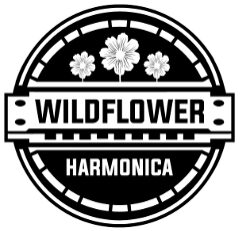It’s actually not that hard to play in minor keys on a standard major diatonic harmonica.
D Minor – The Dorian Minor
-4 5 -5 6 -6 -7 7 -8 D E F G A B C D
Dorian Minor is the sound you hear in folk songs like “Scarborough Fair.” You can also find it in rock songs like “Riders On the Storm” by The Doors and Santana’s “Oye Como Va.”
A Minor – The Aeolian or “Natural” Minor
-6 -7 7 -8 8 -9 9 -10 A B C D E F G A
Aeolian minor is the sound of “Black Magic Woman” by Santana, the riff for “Rock Lobster” by the B-52s, and it’s also used in the Christmas Carol “O Come Ye Merry Gentlemen.”
Modes of the Major Scale
How are we playing in different keys on the same harmonica? It’s a long story, but here’s the basic idea: each note in the major scale can be used as the starting point to produce a slightly different-sounding scale with a new name. There are seven of them, and together they’re called The Modes of the Major Scale.
There are actually four different minor modes but Dorian and Aeolian are the most commonly used in Western music, so they’re a good place to start if you’re interested in rock, blues, and American & European folk music.
Harmonicas Other Than C
If you switch harmonicas, these positions will continue to give you Dorian and Aeolian but the letter names will change. On an A harmonica, you’ll get B Dorian and F# Aeolian. On a G harmonica, you’ll get A Dorian and E Aeolian. Look up a note chart for your harmonica and whatever the note name is for your 4-draw, that’s your Dorian key. Likewise, the note name for 6-Draw will give you your Aeolian key.

Hey, thanks! Been playing around with the harp for years. Now I live in an area with a lot of diverse musicians and I’m getting excited about learning more and playing seriously.